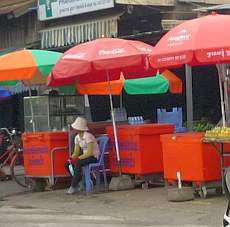
An obvious part of daily life in Cambodia are the orange plastic coolers used throughout the country to keep things cool where there is no electricity and refrigeration. Click here to see the first part of series about Cambodia’s coolers!
Charlie Dittmeier's Home Page

An obvious part of daily life in Cambodia are the orange plastic coolers used throughout the country to keep things cool where there is no electricity and refrigeration. Click here to see the first part of series about Cambodia’s coolers!
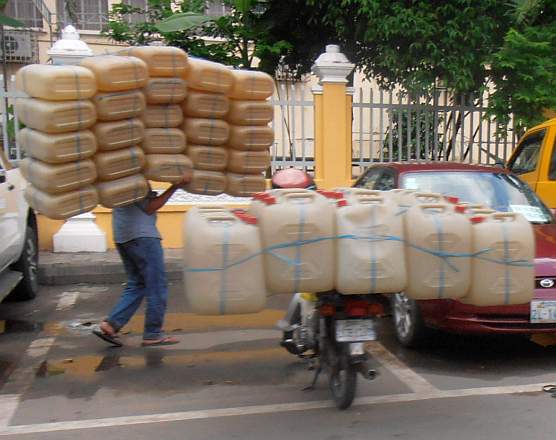
How many containers to you think he ended up with on his motorcycle?
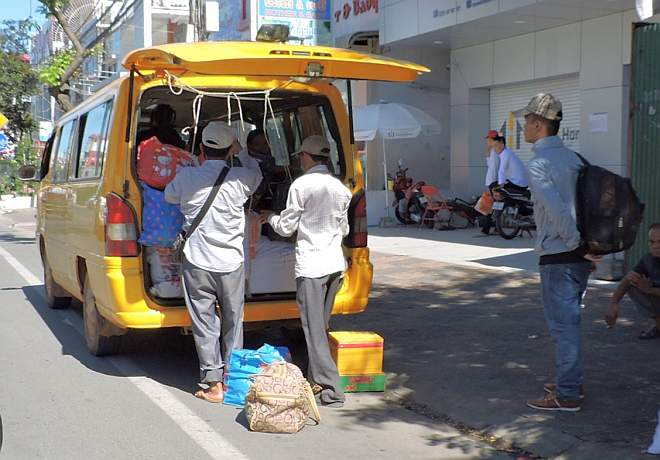
Today is the first of the three days of the official Pchum Ben holiday. Most people have already left town, but there are always some whose departure is delayed by their jobs or other circumstances. This morning here were some of the late-departers cramming themselves and their belongings into an overcrowded van for a trip that can’t be too enjoyable but is just part of life for the majority of the populace who depend on this kind of transport.
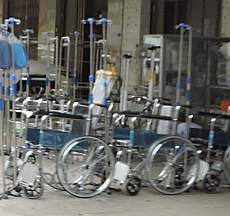
Every morning Phnom Penh gets ready for a new day of business. Here is how a street selling medical supplies is transformed each day. Click here to see the change.
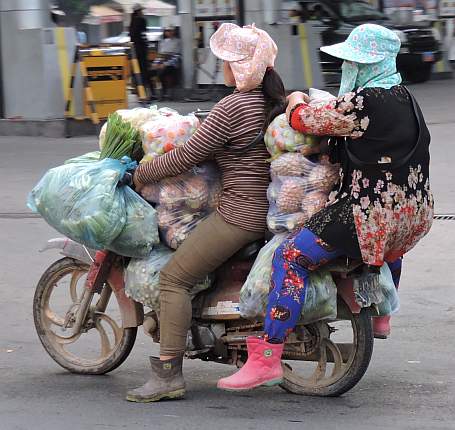
Here’s another all-girls overload, just a day after the first one!
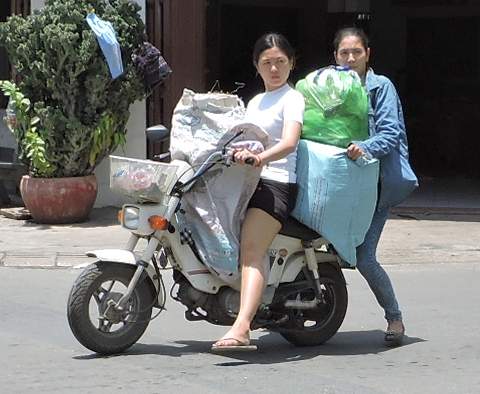
It isn’t only the guys who overload motorcycles!
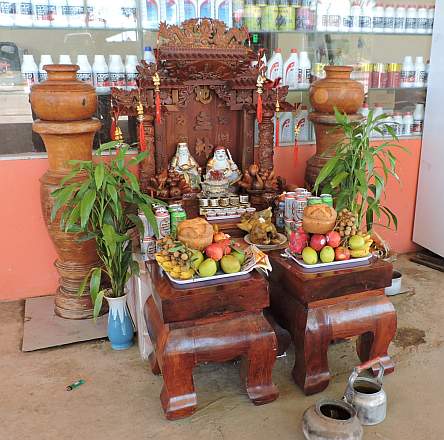
Today we drove to Kampot Province with our donors from Korea and when we stopped at a gas station on the way down, this elaborate offering to the spirits of the deceased was placed in front of the station. Today is the Spirit Festival in Chinese culture and the gas station owners–and many, many other people in Cambodia—took it very seriously.
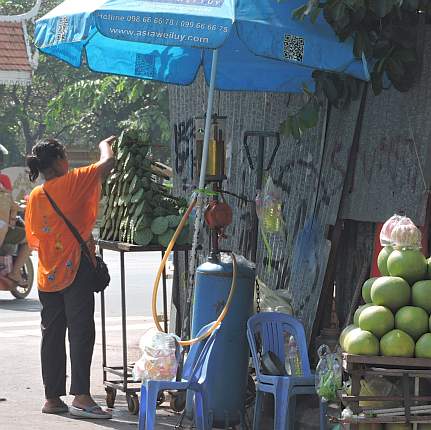
This woman has everything covered: she’s arranging lotus pods which can be given at the wat on the Buddhist holiday that day (and the seeds can then be eaten); in the middle she’s selling gasoline from the blue handcrank pump; and if you want to fill yourself rather than your motorcycle tank, you can buy a pomelo fruit stacked on the right.
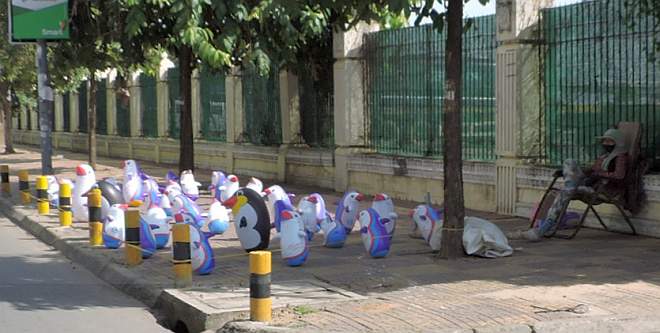
The alien invaders have now established a new front on the east side of town. Soon we’ll be surrounded…. (Click here to see the action on the southern front.)
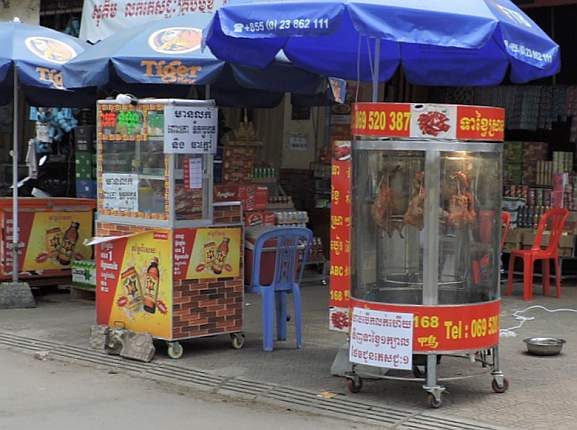
In a culture where many, many people are selling food on the street, anything that makes your product stand out is an advantage. One of the newest marketing gimmicks to hit the Phnom Penh streets is this chicken carousel. Powered by an electrical cable snaking across the pavement, the machine has a rotating display and warming lamps for pre-roasted chickens and geese.
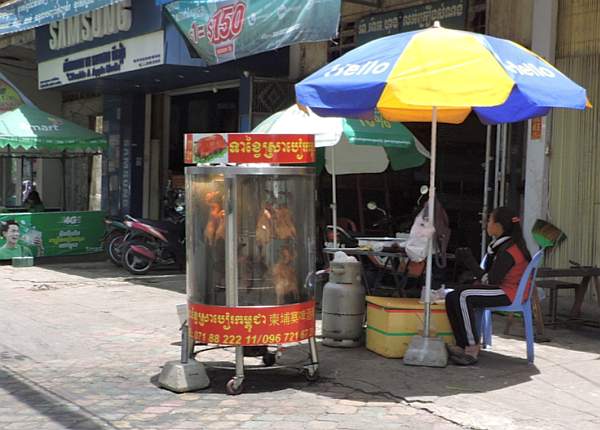
The rotating displays are an eye-catching novelty now but they must be a real headache to clean.